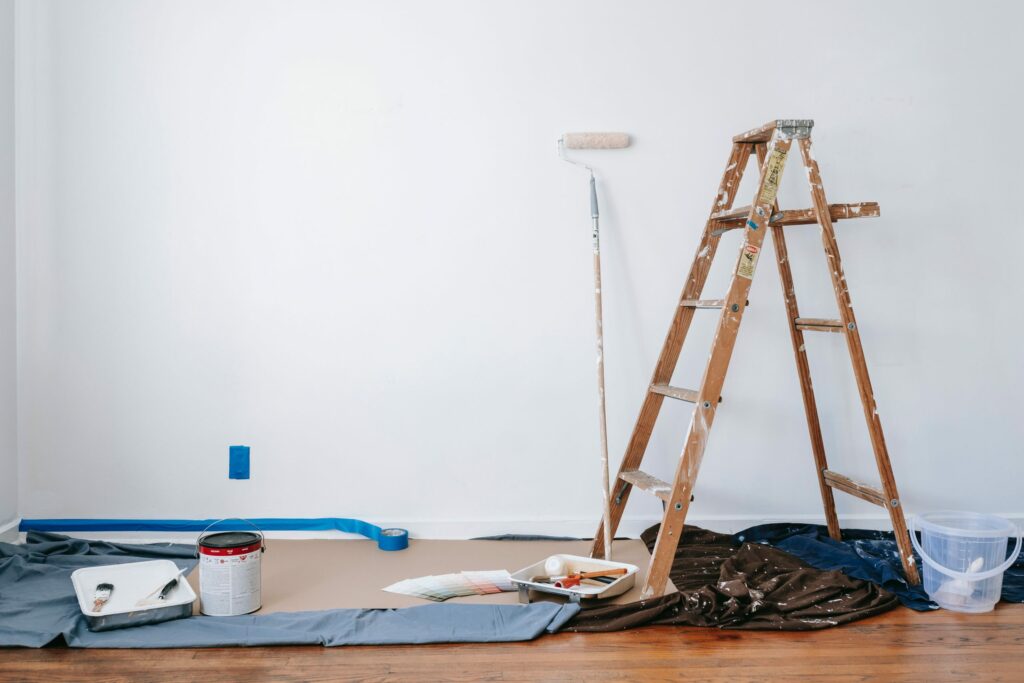How to Get Home Improvement Loans in Texas

Are you a homeowner in Texas looking to make significant improvements to your property? Whether you’re planning to renovate your kitchen, add a new room, or upgrade your outdoor living space, expect to spend at least a few thousand dollars.
The expenses will vary depending on the size of your house, which parts of your home you’re renovating, and the materials you prefer. You also need to consider the city that you live in. For example, in Austin, you can expect to spend at least $8,500 for a simple home renovation and about $67,000 for significant renovations like foundations. In Dallas, a home improvement company, Mr. Handyman, estimates costs for renovations to range from $80 to $100 per square foot.
If you need financial assistance for your home improvement project, exploring home improvement loans can provide the necessary funds to bring your vision to life. Let’s explore the process of getting a home improvement loan in Texas, so you’ll have the knowledge and resources to make informed decisions about financing your home improvement projects.
Understanding Home Improvement Loans In Texas
Home improvement loans are designed to help homeowners finance renovations, repairs, or property upgrades. They provide a convenient way to access the funds needed for your project so that you can maintain the quality and scope of your home improvements.
When getting a home improvement loan in Texas, it is common for homeowners to hire a contractor who will provide a contract agreement that clearly outlines the planned improvements and their costs. If you’ve already started the renovation work, securing a home improvement loan might not be an option, so consider other financing methods.
Here are other types of loans to finance home improvement projects and how they work.
Personal Loans
Personal loans from traditional and online lenders have a straightforward application process and quick access to funds. While collateral is not required, higher interest rates are expected due to the lender’s increased risk. It’s important to consider that personal loans provide a lump-sum payment, which may not be suitable for phased DIY projects.
Texas has specific interest rate laws that limit most loans to 6%. Remember that business loans, commercial loans, investments, and open-end accounts are exempt from Texas interest rate laws.
Online lenders who charge interest rates that go over 6% are required to register with the Texas Office of Consumer Credit Commissioner, which imposes the following caps on loans:
- 32% for personal loans up to $2,010
- 30%, 24%, and 18% for personal loans between $2,011 and $16,750
- 18% for all other loans
- 240% for small signature loans up to $1,340
Like other US states, Texas limits interest rates for traditional and online lenders. However, consumers can waive these limits by agreeing to the terms lenders offer. These exceptions may cause consumers to agree to loans with high-interest rates. So, do due diligence in shopping for reasonable rates for your budget and needs.
Home Equity
Another option is to utilize your home equity, which is the difference between the market value of your home and the remaining balance on your mortgage. Home Equity Lines of Credit (HELOCs) and Home Equity Loans are two popular choices for homeowners. These financing solutions allow you to tap into the equity you’ve built in your home to fund renovations, repairs, or other upgrades.
HELOCs, which mix the benefits of home equity loans and credit cards, provide homeowners with a flexible financing option for phased home renovations. You can borrow money as needed up to a certain credit limit.
With home equity loans, on the other hand, you receive a lump sum of money upfront based on the equity in your home. They often have lower interest rates than other financing options because your home secures them. Keep in mind that if you are unable to repay the loan, you could potentially face foreclosure.
Equity lending in Texas has specific rules, specified in Section 50 of the 1997 Texas Constitution, to protect borrowers from predatory loans and lending practices:
- You can only borrow up to 80% of your home’s market value.
- You can only get one loan per year.
- You must pay primary equity loans first to obtain a second loan.
- You cannot use agricultural land to secure a home equity loan.
Getting A Home Improvement Loan in Texas
To increase your chances of getting your home improvement loan in Texas approved, it is best to follow these steps:
Do your research
When looking for a home improvement loan in Texas, it’s best to look into different lending options to find the one that best suits your needs. Start by researching local banks, credit unions, online lenders, and specialized home improvement loan providers. Compare interest rates, loan terms, and repayment options to determine which lenders offer the most favorable conditions for your situation.
Check their requirements and eligibility criteria
Once you’ve identified potential lenders, carefully review their eligibility criteria. Lenders may have specific requirements regarding credit scores, income, employment history, and the market value of your home. Check if you meet their requirements before proceeding with the application process. However, it’s worth noting that even if your credit score is less than perfect, lenders still cater to borrowers of different credit backgrounds.
Prepare documentation
Gather all the necessary documents beforehand. Typically, you’ll need to provide proof of identity, proof of homeownership, income verification, and details of the proposed home improvement project. Having these documents readily available will ensure a smooth application process and expedite loan approval.
Assess the loan amount and repayment terms
Carefully consider the loan amount before submitting your loan application. Consider the scope and cost of your home improvement project, and make sure you’re asking for enough money to cover all expenses. Pay close attention to the repayment terms offered by the lender. Some lenders provide flexible payment plans, allowing you to choose between weekly, bi-weekly, monthly, or semi-monthly installments. Choose a repayment plan that aligns with your financial capabilities and is convenient.
Submit your application
Once you’ve completed all the necessary documentation, it’s time to submit your loan application. If the lender offers an online application process, take advantage of the convenience and submit your documents digitally. Be thorough and accurate when filling out the application form, as any errors or missing information may delay the approval process.
Review and accept the offer and get the funds
Upon submission of your application, the lender will assess your eligibility and review your documentation. If approved, the lender will provide a loan offer detailing the approved loan amount, interest rate, and repayment terms. Carefully review the offer, and check if it meets your expectations and aligns with your financial goals. With home equity loans in Texas, you will be given a three-day grace period after closing the loan to cancel it.
Final thoughts
There are several ways to get the funds you need for your home improvement project, including personal loans, home equity lines of credit (HELOCs), and home equity loans. Before applying, do your homework and compare lenders, review interest rates and repayment terms, and ensure you meet the eligibility requirements.
If you’re looking for a convenient and flexible option, choose Payment1. We offer instant funding for new and current customers and flexible payment plans. Contact us today to know more about your home improvement funding options, or head to either of our Texas offices and talk to our friendly team in person.


